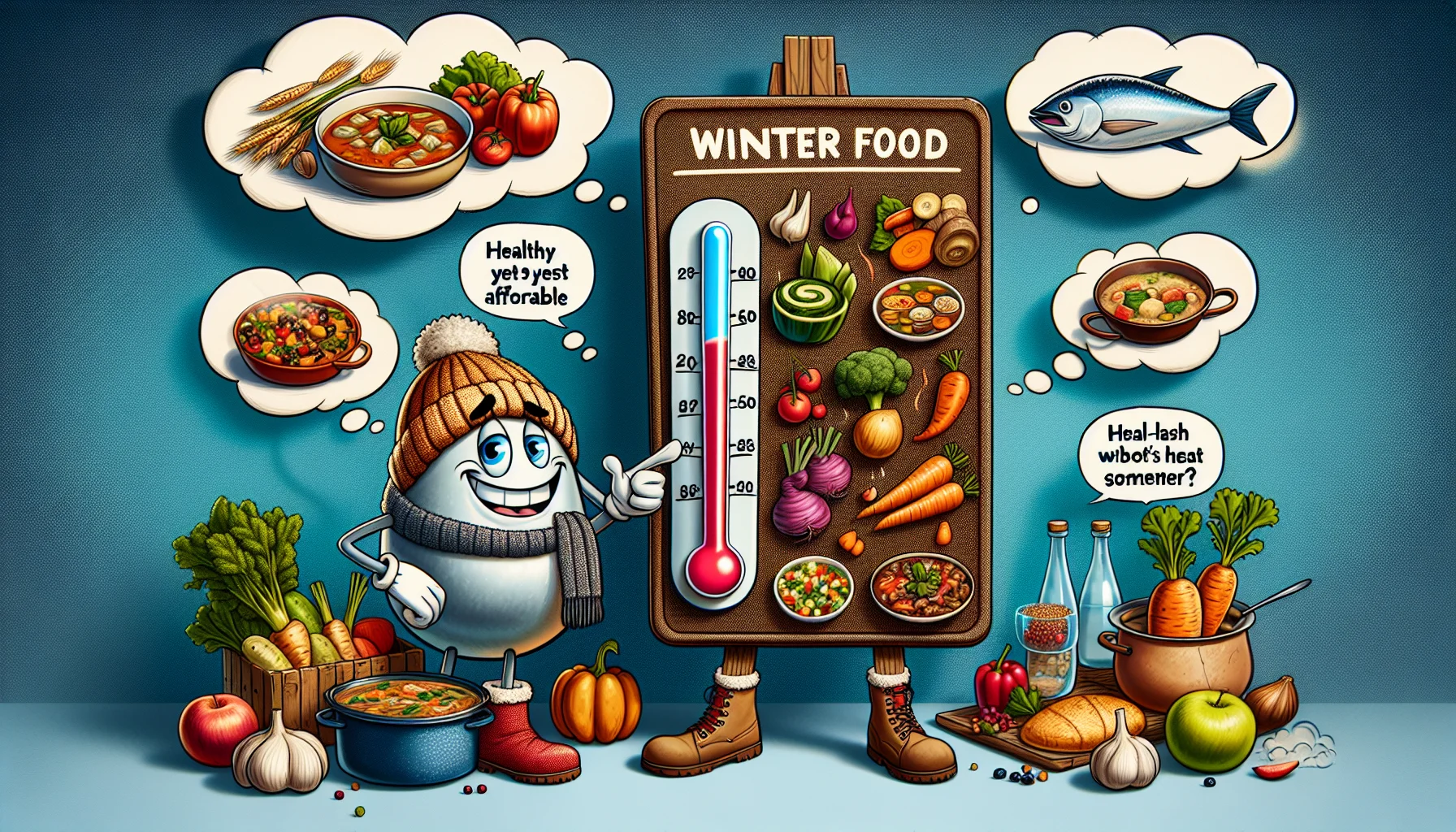Warming Winter Menu Plan Quiz
Test Your Knowledge
Question of
Warming Winter Menu Plan for Healthy Eating
During the colder months, it's essential to maintain a healthy diet to support our immune system and overall well-being. A warming winter menu not only helps in keeping us warm but also ensures that we are consuming nutritious meals rich in vitamins and minerals. These meals can boost our mood, energy levels, and resistance to winter ailments. Incorporating seasonal vegetables and fruits, whole grains, and lean proteins into our winter diet can play a significant role in our health, helping us to stay active and vibrant even in the chilliest weather.
Benefits of Warm Foods in Winter
- Improved digestion: Warm foods can help in enhancing the digestion process by aiding in the breakdown of food particles more efficiently.
- Enhanced immune system: Consuming warm meals can boost the immune system, helping the body to fight off colds and flu more effectively.
- Increased body warmth: Warm foods and beverages help in maintaining body temperature, providing comfort and warmth from the inside out during cold weather.
- Better nutrient absorption: The heat from warm foods can aid in the absorption of certain nutrients and vitamins, making them more beneficial to the body.
- Comforting effects: Warm meals have a soothing and comforting effect, which can improve mood and reduce stress levels during the winter season.
Key Ingredients for a Warming Winter Menu
When the cold weather sets in, our bodies crave foods that not only warm us up but also provide the necessary nutrients to help us combat the chill. Ingredients rich in spices, such as cinnamon, ginger, and turmeric, are perfect for adding a warming sensation and boosting immunity. Root vegetables like sweet potatoes, carrots, and beets are excellent for their high fiber content and ability to absorb and meld with hearty flavors. Whole grains, including quinoa and barley, offer essential B vitamins and are ideal for adding substance to soups and stews. Beans and lentils are another winter staple, providing a comforting texture and a wealth of protein, fiber, and minerals. Incorporating these ingredients into your winter menu can help create nourishing, warming meals that satisfy the soul and the stomach.
5-Day Warming Winter Menu Plan
| Day | Breakfast | Lunch | Dinner | Snack |
|---|---|---|---|---|
| Monday | Oatmeal with honey and cinnamon | Butternut squash soup | Beef stew with root vegetables | Roasted chestnuts |
| Tuesday | Scrambled eggs with spinach and feta | Lentil soup with carrots and celery | Chicken curry with brown rice | Apple slices with almond butter |
| Wednesday | Banana and walnut porridge | Tomato and basil soup | Vegetable stir-fry with tofu | Dark chocolate and almonds |
| Thursday | Whole grain pancakes with maple syrup | Chickpea and spinach stew | Salmon with quinoa and steamed broccoli | Homemade granola bars |
| Friday | Yogurt with granola and berries | Pea and ham soup | Lamb tagine with couscous | Carrot and celery sticks with hummus |
Preparation Tips for Winter Meals
- Plan your meals around seasonal produce to ensure freshness and nutritional value. Look for root vegetables, squashes, and dark leafy greens.
- Incorporate a variety of colors in your meals to ensure a wide range of nutrients. Each color represents different vitamins and minerals.
- Use slow cooking methods like stewing and roasting to enhance flavors without adding excessive fats or oils. These methods also help in preserving nutrients.
- Prepare soups and stews in bulk. They are excellent for warming up during cold days and can be easily frozen for future meals.
- Consider batch cooking and freezing portions. This saves time and ensures you always have a healthy meal on hand.
- Make use of spices and herbs to add flavor without the need for extra salt or fat. Many spices also offer health benefits.
- Try steaming vegetables instead of boiling to minimize nutrient loss. Steaming helps retain the maximum amount of vitamins and minerals.
- Keep your pantry stocked with whole grains and legumes. They are great for adding substance and nutrition to winter meals.
- Stay hydrated by drinking plenty of water, and don’t forget that hot teas and broths also count towards your daily fluid intake.
- Don’t shy away from healthy fats like those found in avocados, nuts, and seeds. They’re essential for absorbing fat-soluble vitamins.
Staying Hydrated in Winter
During the winter months, it's easy to overlook the importance of staying hydrated. Unlike the summer, when the heat makes us reach for water, cold weather tends to reduce our thirst response. However, hydration is just as crucial in the winter to help maintain our body's functions, including temperature regulation and keeping our skin moisturized. Warm beverages can be especially appealing and beneficial during colder weather. Herbal teas, warm water with lemon, and broth-based soups are excellent choices for keeping hydrated while also providing a comforting warmth. Incorporating these beverages into your daily routine can help ensure you stay well-hydrated throughout the winter season.
Conclusion: Embracing a Healthy Warming Winter Menu
As we've explored throughout the article, incorporating warming and nutritious meals into your winter diet can significantly enhance your health and provide comfort during the colder months. From hearty soups and stews packed with seasonal vegetables to whole grains and lean proteins that nourish the body, these meals are not only delicious but also beneficial for maintaining wellness. Embracing these food choices can help boost your immune system, increase energy levels, and ensure you're getting essential vitamins and minerals. We encourage everyone to try incorporating these healthy and warming meals into their winter diet for a more enjoyable and healthier season.












